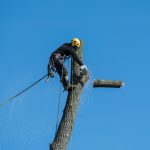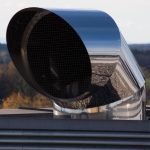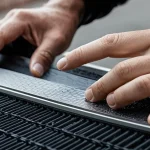Understanding Limescale and Hard Water in the UK
Limescale is a hard, chalky deposit primarily composed of calcium carbonate. This deposit forms when hard water, rich in calcium and magnesium ions, is heated or left to evaporate. In the UK, limescale formation occurs predominantly in areas with hard water sourced from chalk and limestone geological regions. These minerals dissolve into the water as it moves through underground aquifers, increasing hardness.
Understanding UK hard water regions is essential. Areas such as the South East of England, including London, experience higher water hardness levels. Conversely, Scotland and parts of Wales mostly have softer water. The presence of limescale can vary significantly depending on local geology and water sources.
Topic to read : Convert your clamorous house into a serene sanctuary: top window solutions for uk homeowners!
Limescale impacts household appliances and plumbing by building up inside kettles, boilers, washing machines, and pipes. This buildup reduces efficiency and lifespan by insulating heating elements and narrowing water flow. Recognising this can prompt homeowners in UK hard water regions to adopt suitable maintenance to protect their homes and appliances effectively.
Understanding Limescale and Hard Water in the UK
Hard water is water that contains high levels of dissolved minerals, especially calcium and magnesium. When hard water is heated or exposed to air, these minerals precipitate out to form limescale, a chalky, stubborn deposit. Limescale formation occurs primarily inside kettles, boilers, pipes, and other appliances where water is heated or stagnates. It gradually accumulates, reducing appliance efficiency.
Also read : Revamp your loft: innovative ideas for an ideal uk home office conversion
In the UK, hard water is widespread, but its hardness varies by region. Areas such as the South East, East Anglia, and parts of the Midlands experience higher mineral concentrations, classified as UK hard water regions. Conversely, Scotland and parts of Wales tend to have softer water. Understanding local water quality is crucial because limescale build-up is more severe where water hardness is high.
The impact of limescale extends beyond everyday nuisance. It can cause blockages in plumbing, increase energy consumption by insulating heating elements, and shorten the lifespan of household appliances. For example, boilers working harder to heat water coated with limescale not only waste energy but also require earlier replacement or repairs. Addressing hard water and its effects is vital for maintaining home functionality and energy efficiency across affected UK regions.
Identifying Hard Water and Limescale in Your Home
Recognising hard water and signs of limescale early is essential to protect your home. Common indicators include white, chalky deposits around taps, showerheads, and inside kettles or boilers. You might also notice spots on dishes after washing or reduced water flow from blocked pipes caused by limescale build-up.
To confirm whether you have hard water, test kits are widely available. These kits measure calcium and magnesium levels, providing a clear reading of water hardness in your area. Alternatively, you can check local water quality reports published by water suppliers, which specify hardness levels by postcode. This information helps pinpoint whether you live in one of the UK hard water regions.
Different parts of the UK have varying water hardness. For instance, the South East typically experiences harder water, increasing the likelihood of limescale formation and maintenance issues. Understanding your region’s water characteristics enables more effective prevention and care.
Being proactive in identifying hard water issues early limits damage to appliances and plumbing. Regular observation and testing empower homeowners to act promptly and choose suitable treatments tailored to their local conditions.
Identifying Hard Water and Limescale in Your Home
Recognising hard water and signs of limescale in your home is vital to preventing damage. Common indicators include white, chalky deposits around taps, showerheads, and inside kettles. You may notice reduced water flow or longer heating times in appliances, which signal limescale formation affecting efficiency. Skin and hair may also feel dry or rough after showering, a subtle hint of hard water presence.
To confirm whether you have hard water, you can use home test kits that measure mineral content or check local water quality reports online provided by your water supplier. These resources specify hardness levels according to where you live, helping you determine if you are in one of the UK hard water regions.
Water hardness levels vary across the UK. For example, homes in Southern England and the East Midlands often face higher levels of hardness, while Scotland and parts of Wales generally experience softer water. This regional variation means the severity of limescale formation and its impact can differ significantly depending on your home’s location. Knowing these details allows homeowners to take timely and appropriate action.
Preventative Strategies for Limescale
Preventing limescale requires a conscious approach to everyday water use and appliance care. One of the most effective ways to curb limescale formation is by managing water temperature. Since hard water deposits minerals more readily as it heats, using lower temperatures for kettles and washing machines reduces buildup.
Routine maintenance also plays a crucial role. Regularly descaling kettles and boilers—at least every 3 months—helps prevent thick layers of limescale from forming. Wiping taps and showerheads to remove surface deposits can delay more stubborn accumulation. For UK appliances, manufacturers often recommend specific cleaning products designed to tackle mineral residue gently without damage.
Adapting daily habits further aids in preventing limescale. For instance, emptying kettles immediately after use avoids water sitting and evaporating, which triggers deposits. Similarly, using water softer or filtered water where possible can lessen hardness levels reaching appliances.
These simple, consistent actions not only extend the lifespan of household devices but also maintain their efficiency, reducing energy consumption. Understanding the source of your hard water and combining preventative steps tailored to your UK hard water region ensures more effective control over limescale formation and related issues.
Removing Limescale: Effective Methods
Removing limescale effectively requires choosing the right approach based on its severity and location. Common home remedies like vinegar, lemon juice, and baking soda are popular for tackling mild to moderate deposits. Vinegar’s mild acidity helps dissolve calcium carbonate, making it effective for cleaning kettles, taps, and showerheads. Lemon juice works similarly, with the added benefit of leaving a fresh scent. Baking soda, when combined with vinegar, can boost cleaning power by gently scrubbing deposits.
For stubborn limescale buildup, soaking affected parts or applying these natural solutions repeatedly enhances results. For example, filling a kettle with vinegar or lemon juice and letting it sit for an hour softens deposits before rinsing away. However, some areas like boiler interiors may require professional descaling to avoid damage.
While natural remedies are safe, always test on small areas first, especially on UK appliances with sensitive surfaces. Avoid mixing cleaning products indiscriminately, as some combinations may produce harmful fumes or damage finishes. Using appropriate cleaning products designed specifically for limescale can safely accelerate removal if home treatments are insufficient.
Overall, combining natural and commercial methods ensures cleaner, more efficient appliances and reduces the impact of persistent limescale buildup.
Removing Limescale: Effective Methods
Removing limescale effectively involves a combination of home remedies and commercial cleaning products. Common household items such as vinegar, lemon juice, and baking soda are widely recommended for tackling limescale build-up. Vinegar’s acetic acid dissolves calcium carbonate deposits, making it particularly useful for descaling kettles or showerheads. Lemon juice works similarly, offering a natural, fresh-smelling alternative while breaking down mineral deposits gently. Baking soda can be combined with vinegar to create a fizzing reaction that helps lift stubborn residue.
For thicker limescale, applying these remedies requires some patience. Soaking affected parts in vinegar or lemon juice for 30 minutes to an hour can soften deposits before scrubbing. Alternatively, spraying or rubbing with a paste of baking soda and water targets tough stains. Repeated treatments may be necessary, especially in areas of heavy formation.
Safety is crucial: avoid using abrasive tools that can scratch surfaces and always rinse appliances thoroughly to remove acid residues. While natural solutions are practical and eco-friendly, they may prove less effective on severe or extensive limescale build-up compared to specialised descaling products. Balancing methods depending on deposit severity ensures optimal results when removing limescale in your home.
Understanding Limescale and Hard Water in the UK
Limescale forms when hard water, rich in calcium and magnesium, is heated or evaporates, leaving behind chalky deposits primarily composed of calcium carbonate. This process is known as limescale formation and is common in the UK where groundwater flows through chalk and limestone, dissolving minerals along the way.
UK hard water regions mainly include the South East, East Anglia, and parts of the Midlands, where mineral concentrations are higher. In these areas, hard water impacts household appliances and plumbing by accumulating inside kettles, boilers, and pipes. This buildup acts as an insulating layer on heating elements, making appliances less efficient and increasing energy consumption. Over time, limescale narrows pipes reducing water flow and can cause blockages.
Appliances exposed to frequent heating cycles are most vulnerable. For instance, boilers need more energy to heat water layered with limescale, leading to higher running costs and more frequent repairs. Understanding these effects in UK hard water regions allows homeowners to anticipate problems and consider solutions tailored to their local water quality.
Commercial Products and Solutions
Choosing effective limescale removers is essential for tackling stubborn deposits in UK homes. Leading UK cleaning brands offer specialized products designed for different surfaces and appliance types, providing faster and safer limescale removal than household remedies. These commercial products often contain acids or chelating agents that break down mineral deposits efficiently without damaging metal or plastic components.
When selecting a limescale remover, key features to compare include the product’s strength, suitability for specific appliances like kettles or boilers, and environmental safety. Some formulations also incorporate rinse aids to prevent residue buildup. Users should carefully follow application instructions to maximize effectiveness and minimize risks, such as corrosive damage or fumes.
Best practices for safe use involve wearing gloves, ensuring good ventilation, and avoiding mixing cleaners. It’s wise to spot-test products on inconspicuous areas, especially on delicate surfaces common in modern UK appliances. For heavy or repeated limescale formation, combining commercial products with routine cleaning extends appliance lifespan and maintains efficiency.
Overall, selecting the right limescale removers from reputable UK brands and applying them responsibly delivers practical and long-lasting solutions to manage hard water challenges.










